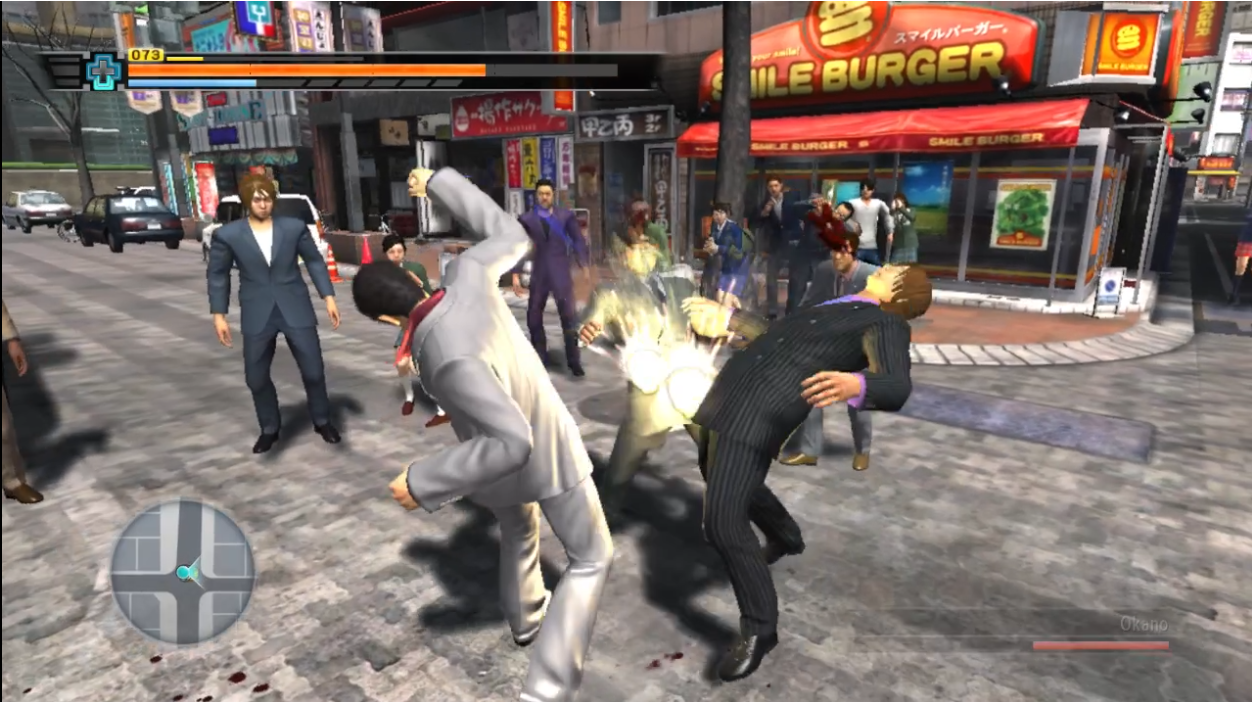

Well, you know I had to eventually come to talk about Yakuza 3 one day after completing the first two games - although this is the Remastered port released for PC and other platforms way later after the original PS3 exclusive.
That's a bit of an important distinction only because of some issues this version has that require mods to fix, such as broken heat gain and kneecapped dodge range due to the internal logic not being designed for 60fps yet the port itself not updating these details to fit.
That aside, it was about time to try out Kiryu's one adventure where he has some time to take things slowly [most of the time] at Okinawa after the chaos of the first two titles...which also comes with a very particular set of gameplay tweaks that can make or break the game for some people.
What does this new beginning mean for Kiryu?
Well, the first chapter has Kiryu say goodbye to those characters that he knew well from Kamurocho, having the combat tutorials and ending with a fight with Majima, who shows some prowess for being a first boss...but is clearly neutered compared to previous encounters.
He's still more of a challenge that the first bosses at the previous two games as he can try blocking or dodging your usual attack attempts, but if you know what you're doing, you can take him out by waiting for his attacks, sidestep, and then punish with your combo while his back is esposed.
...Or if you just spam grabs against him. Not the best way, but it sure worked for a clueless and impatient me.
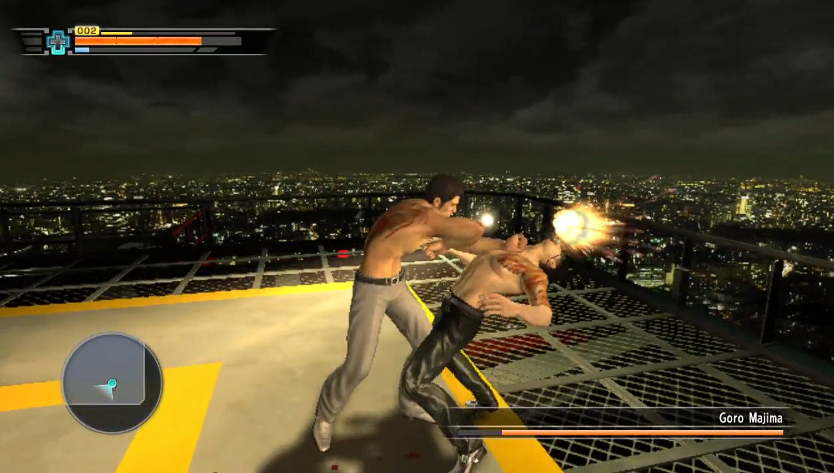
With that done, he moves on to a new life by maintaining an orphanage at Okinawa with Haruka, taking care of some other children and most of the time giving them some important life lessons as you follow on some of their problems.
The plot with these kids may seem like sidetracking to some at first, but on top of having a chance to see Kiryu happy and in a calm place for more than a few hours, these kids end up part of the plot with how eviction notes start appearing at the orphanage, making Kiryu decide to go and talk with his fists to those who keep insisting.
But of course, since this is Kiryu we're talking about, he will still run on stupid punks on the street that want to beat him up - so you do what you do and move on. Even Rikiya, who's the captain of the Ryudo family and had been placing the notices there, ends up having a change of mind by understanding who Kiryu is through two steps.
The first one, obviously, is by getting his ass beat up. Maybe not underestimate him entirely since he can still dodge and block like Majima...but he's a sitting duck in front of any chairs, tables and bicycles you attack him with.
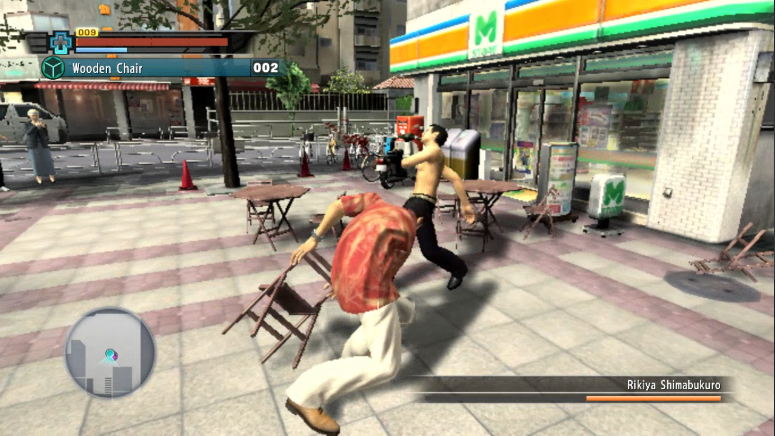
And then, he can get to talk with his boss - through a series of events, Rikiya and his boss end up having some fondness for Kiryu, and even having Rikiya tag along with Kiryu later on.
Sooner or later, you'll first run into spending some more time running errands for the kids, but eventually you'll be finding out more and more about what's the deal with the eviction notes, as a bigger fish is not only trying to get a military base and resort built over his terrain, but also trying to make sure no one gets in their way - Kiryu included.
It is kind of cool how Kiryu's story here isn't just about fighting through for the sake of the Tojo clan or even his own life and those few that have had a reason to care about him, but more so about protecting the place where he raised those kids at all costs. Quite a switch-up on top of being a logical conclusion of Kiryu's development as he warms up to a better future.
But now, its time to talk about the elephant in the room: The combat.
Patience is now required more than ever

A bit of an infamous aspect from Yakuza 3 amongst some that follow the series is the way damage and enemy behaviour was tweaked, with the latter also being affected by issues from the Remastered port.
Kiryu doesn't deal as much immediate damage as he did before with his bare fists, unless you can get some strong juggle combos by chance or by practice, but add to that the frequency of enemies that can try blocking you [most evident with bosses] and you have a recipe for combat that can be a brick wall for most newcomers, whether experienced with the previous games or not.
Basically, if the straightforward method of punching them face first until they are down doesn't work, and that also happens to be your most common method of dealing with enemies and bosses...then you are indeed into trouble. Even more so if you're surrounded by a bunch of them and don't know how to knock them all down evenly so that you don't keep getting attacked from behind.

There's ways to sort around bosses that force you into this situation - paying attention to their animations and try to dodge their moves on reaction is a good one if you can do it, as sidestepping right into their back means you can get a back combo at them without a chance to block you.
But weapons can often bypass blocking for their first phases [they start blocking them as well when they are halfway through in health], and of course, arrive prepared with healing items should things go south.
In a way, it reminds me of Spikeout with how you're forced to keep your distance and keep an eye on what the boss does just to know when to strike and try to get damage out of them. Although dealing with crowds can be even more difficult than in Spikeout at times if you end up losing time attacking an enemy that decided to block while the rest decide to attack you at once.
And I mention this because, just like in Spikeout, YOU can get juggled hard by multiple enemies if they attack you simultaneously, more so if they get you in a corner.
There's something cool about a more challenging game overall forcing you to play smarter, as it is simultaneously and kind of ironically, a bit more frustrating at times if you want to try and fend yourself without healing or weapons when the enemies can sometimes be a bit tougher [although NORMAL enemies can often be thrown anyways, so you just have to remember to do that more], and ESPECIALLY the bosses can be quite a jump in difficulty if you want to fight them empty-handed [both your hands and your pockets] for some reason.
Seriously, Shimano and Ryuji's first fights in the third chapter of the previous two games is chump change compared to chapter 3's Tetsuo Tamashiro casually having two health bars, a second phase with iron knuckles, and overall dealing more damage while avoiding to do useless attack at the air too frequently, forcing you to focus more to punish his mistakes.
Thoughts on other aspects

Well, a game that was previously for the PS3 may not seem completely stunning in graphics for modern audiences of today...but it is absolutely a noticeable jump from the first two on the PS2, more so if you made those your starting point on the franchise like I did.
It is most evident as you can now freely run around Kamurocho and Okinawa with a third person camera rather than being separated by screens and a fixed camera.
Some side activities you can do also have been overhauled, either slightly [baseball, bowling] or massively [the golf game here is practically a fully fledged golf game with all the holes and club options], as well as having the Karaoke available, which would eventually play part of Yakuza 0's meteoric rise [and as a result, the whole franchise] internationally with that one song.
And no, that one song isn't here yet, but its still quite funny to see both Kiryu happily chanting as Haruka sings and hearing Kiryu himself sing about his memories at Kamurocho. Some additional things you can get for sidequests or upgrades are also in a separate side set of events.
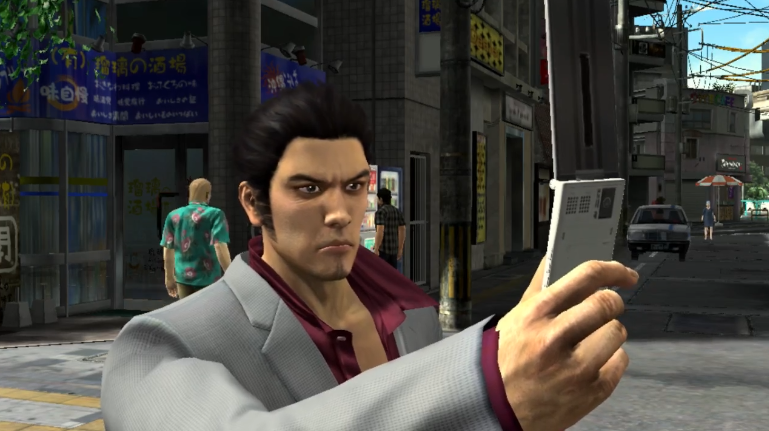
For example, Revelations end up making silly moments you take a photo of with your camera [always conveniently told in advance to look for through email] into new moves you can use in combat, taking goofy moments you run into as inspiration for yet another way to beat up a thug.
Sometime past the halfway point, you also run into the Honest Living Association, which essentially can inform you about assasins for you to defeat, some of which may even use boss movesets, to get even more EXP and money.
Conclusion, so far
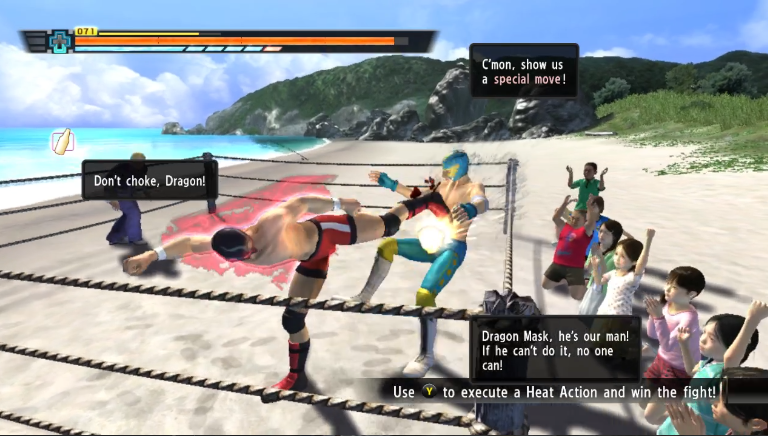
This game definitely feels like it was made with a higher challenge for those who had already palyed the first two games, between a bigger focus on punishing mistakes - either from the bosses as you dodge and attack them...or punishing your own as you may get caught and whooped by a boss if you try to attack blindly rather than use your quickstep.
I can really see how this game would feel weird if you come from Kiwami 1 and 2 [since those games use the combat system from 0 and 6 respectively...which is to say they use the combat from games AFTER 3] as well as if you were expecting a softer difficulty curve. At least you always have the healing items and weapons you can carry on you, which for that matter, you have WAY more room now for those.
But what can I say, I guess its the kind of game that I'd find more interesting to sink my teeth into, even sometimes doing self-imposed challenges to try and beat certain bosses without healing or using weapons in the middle of a fight. Don't try that at home unless you really know what you're doing, by the way.
Thanks for reading, and see you next time.

Spanish translation with DeepL. All screenshots were captured by myself.
Español
Bueno, ya sabéis que tarde o temprano tenía que hablar de Yakuza 3 después de completar los dos primeros juegos, aunque se trata de la versión remasterizada lanzada para PC y otras plataformas mucho después del juego original exclusivo para PS3.
Es una distinción importante solo porque esta versión tiene algunos problemas que requieren modificaciones para solucionarlos, como el aumento de calor defectuoso y el rango de esquiva limitado debido a que la lógica interna no está diseñada para 60 fps, pero la versión en sí no actualiza estos detalles para adaptarse.
Aparte de eso, ya era hora de probar la aventura de Kiryu en la que tiene tiempo para tomarse las cosas con calma (la mayor parte del tiempo) en Okinawa después del caos de los dos primeros títulos... que también viene con una serie de ajustes de jugabilidad muy particulares que pueden hacer que el juego sea un éxito o un fracaso para algunas personas.
¿Qué significa este nuevo comienzo para Kiryu?
Bueno, en el primer capítulo, Kiryu se despide de los personajes que conocía bien de Kamurocho, tiene los tutoriales de combate y termina con una pelea con Majima, que muestra cierta destreza para ser el primer jefe... pero que está claramente neutralizado en comparación con encuentros anteriores.
Sigue siendo más difícil que los primeros jefes de los dos juegos anteriores, ya que puede intentar bloquear o esquivar tus ataques habituales, pero si sabes lo que haces, puedes derrotarlo esperando sus ataques, esquivándolos y luego castigándolo con tu combo mientras tiene la espalda expuesta.
... O si simplemente le lanzas un montón de agarres. No es la mejor manera, pero sin duda funcionó para un novato e impaciente como yo.

Una vez hecho esto, pasa a una nueva vida manteniendo un orfanato en Okinawa con Haruka, cuidando de otros niños y, la mayor parte del tiempo, enseñándoles importantes lecciones de vida mientras se siguen algunos de sus problemas.
La trama con estos niños puede parecer una distracción para algunos al principio, pero además de tener la oportunidad de ver a Kiryu feliz y en un lugar tranquilo durante más de unas pocas horas, estos niños terminan formando parte de la trama cuando empiezan a aparecer avisos de desalojo en el orfanato, lo que hace que Kiryu decida ir a hablar con los puños a aquellos que siguen insistiendo.
Pero, por supuesto, como se trata de Kiryu, seguirá enfrentándose a los estúpidos gamberros de la calle que quieren darle una paliza, así que haces lo que tienes que hacer y sigues adelante. Incluso Rikiya, que es el capitán de la familia Ryudo y había estado colocando los avisos, acaba cambiando de opinión al comprender quién es Kiryu en dos pasos.
El primero, obviamente, es al recibir una paliza. Quizás no hay que subestimarlo del todo, ya que todavía puede esquivar y bloquear como Majima... pero es un blanco fácil frente a cualquier silla, mesa o bicicleta con la que lo ataques.

Y entonces, puede hablar con su jefe: tras una serie de acontecimientos, Rikiya y su jefe terminan sintiendo cierto afecto por Kiryu, e incluso Rikiya acaba acompañando a Kiryu más adelante.
Tarde o temprano, primero te encontrarás haciendo recados para los niños, pero con el tiempo descubrirás más y más sobre el asunto de las notificaciones de desalojo, ya que un pez más gordo no solo está tratando de construir una base militar y un complejo turístico en su terreno, sino que también está tratando de asegurarse de que nadie se interponga en su camino, incluido Kiryu.
Es genial que la historia de Kiryu aquí no se trate solo de luchar por el clan Tojo o incluso por su propia vida y por los pocos que se han preocupado por él, sino más bien de proteger a toda costa el lugar donde crió a esos niños. Es un cambio bastante grande, además de ser una conclusión lógica del desarrollo de Kiryu a medida que se abre a un futuro mejor.
Pero ahora es el momento de hablar del elefante en la habitación: el combate.
Ahora más que nunca se necesita paciencia

Un aspecto un tanto infame de Yakuza 3 entre algunos seguidores de la serie es la forma en que se modificaron el daño y el comportamiento de los enemigos, afectando esto último también a problemas derivados de la versión remasterizada.
Kiryu no inflige tanto daño inmediato como antes con sus puños desnudos, a menos que consigas algunos combos fuertes por casualidad o con la práctica, pero si a eso le sumas la frecuencia con la que los enemigos pueden intentar bloquearte (más evidente con los jefes), tienes la receta perfecta para un combate que puede suponer un muro infranqueable para la mayoría de los recién llegados, tengan o no experiencia con los juegos anteriores.
Básicamente, si el método directo de golpearlos en la cara hasta que caigan no funciona, y ese es también tu método más habitual para enfrentarte a enemigos y jefes... entonces sí que estás en problemas. Más aún si estás rodeado por un montón de ellos y no sabes cómo derribarlos a todos por igual para que no te sigan atacando por la espalda.

Hay formas de sortear a los jefes que te obligan a esta situación: prestar atención a sus animaciones e intentar esquivar sus movimientos por reacción es una buena opción si puedes hacerlo, ya que esquivarlos por la derecha significa que puedes hacerles un combo por la espalda sin que tengan oportunidad de bloquearte.
Pero las armas a menudo pueden eludir el bloqueo en sus primeras fases (empiezan a bloquearlas también cuando tienen la mitad de la salud) y, por supuesto, ve preparado con objetos curativos por si las cosas se tuercen.
En cierto modo, me recuerda a Spikeout, en el que te ves obligado a mantener la distancia y estar atento a lo que hace el jefe para saber cuándo atacar e intentar infligirle daño. Aunque lidiar con multitudes puede ser incluso más difícil que en Spikeout a veces, si terminas perdiendo tiempo atacando a un enemigo que decidió bloquear mientras el resto decide atacarte a la vez.
Y menciono esto porque, al igual que en Spikeout, TÚ puedes ser golpeado duramente por múltiples enemigos si te atacan simultáneamente, más aún si te acorralan en una esquina.
Hay algo interesante en un juego más desafiante en general que te obliga a jugar de forma más inteligente, ya que, al mismo tiempo y de forma un tanto irónica, a veces resulta un poco más frustrante si quieres intentar defenderte sin curarte ni usar armas cuando los enemigos pueden ser a veces un poco más duros [aunque los enemigos NORMALES a menudo se pueden lanzar de todos modos, así que solo tienes que acordarte de hacerlo más], y ESPECIALMENTE los jefes pueden suponer un gran salto en dificultad si quieres luchar contra ellos con las manos vacías [tanto las manos como los bolsillos] por alguna razón.
En serio, las primeras peleas de Shimano y Ryuji en el tercer capítulo de los dos juegos anteriores son pan comido en comparación con el capítulo 3, en el que Tetsuo Tamashiro tiene dos barras de salud, una segunda fase con nudillos de hierro y, en general, inflige más daño mientras evita realizar ataques inútiles al aire con demasiada frecuencia, lo que te obliga a concentrarte más para castigar sus errores.
Reflexiones sobre otros aspectos

Bueno, puede que un juego que antes era para PS3 no parezca del todo impresionante en cuanto a gráficos para el público actual... pero es sin duda un salto notable con respecto a los dos primeros de PS2, más aún si, como yo, empezaste con ellos en la franquicia.
Esto se nota sobre todo porque ahora puedes correr libremente por Kamurocho y Okinawa con una cámara en tercera persona, en lugar de estar separado por pantallas y una cámara fija.
Algunas actividades secundarias que puedes realizar también se han renovado, ya sea ligeramente (béisbol, bolos) o de forma considerable (el juego de golf aquí es prácticamente un juego de golf completo, con todos los hoyos y opciones de palos), además de contar con el karaoke, que acabaría desempeñando un papel importante en el ascenso meteórico de Yakuza 0 (y, como resultado, de toda la franquicia) a nivel internacional con esa canción.
Y no, esa canción aún no está aquí, pero sigue siendo bastante divertido ver a Kiryu cantando alegremente mientras Haruka canta y escuchar al propio Kiryu cantar sobre sus recuerdos en Kamurocho. Algunas co